Abstract
All sewage and water treatment processes remove or destroy viruses. Some treatment methods are better than others, but none is likely to remove all of the viruses present in sewage or in raw water. Primary settling of solids probably removes a great many of the viruses in sewage because viruses are largely associated with the solids. Long storage of effluents or water is destructive to viruses. Activated sludge is the best biological method for removing viruses from sewage. Trickling filters and oxidation ponds are erratic, the latter probably because of short-circuiting. Coagulation with metal ions is the most effective single treatment method for removing viruses from sewage and from raw waters, according to laboratory studies at least. Lime is the best coagulant for these purposes in the rapidly virucidal high pH range. Polyelectrolytes also can sediment viruses. Rapid filtration through clean sand does not remove viruses, but filtration of coagulated effluents does, probably because the layering floc itself adsorbs viruses. Clays and carbon adsorb viruses to some extent, but the process is not efficient. Ultimately, disinfection should help to produce virus-free waters for drinking and virus-free effluents for discharge into waters with which man may come into contact. Because disinfection is not a simple matter, disinfectants must be selected according to need. Effluents and waters containing solids can probably be disinfected only by heat or by penetrating radiation, waters discharged into streams should not be disinfected with anything that will injure or kill aquatic life (unless the toxic products can be neutralized), and drinking-waters should carry a disinfecting residue.
Full text
PDF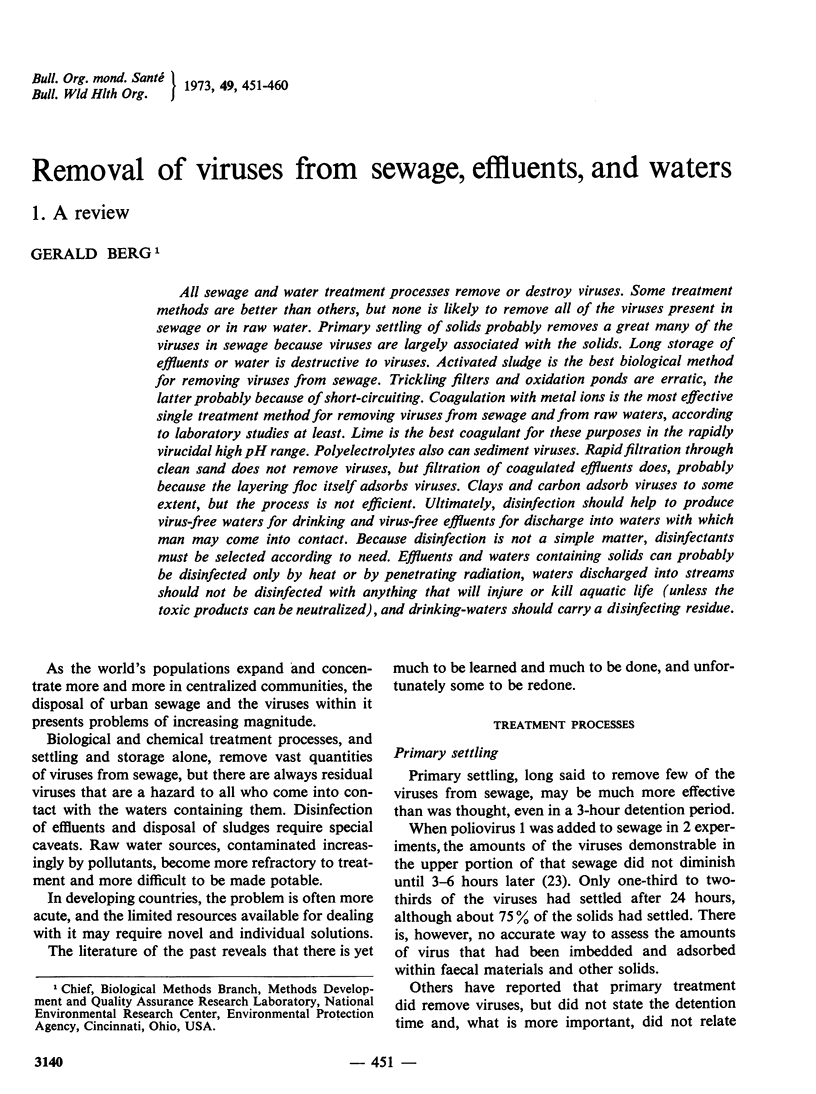
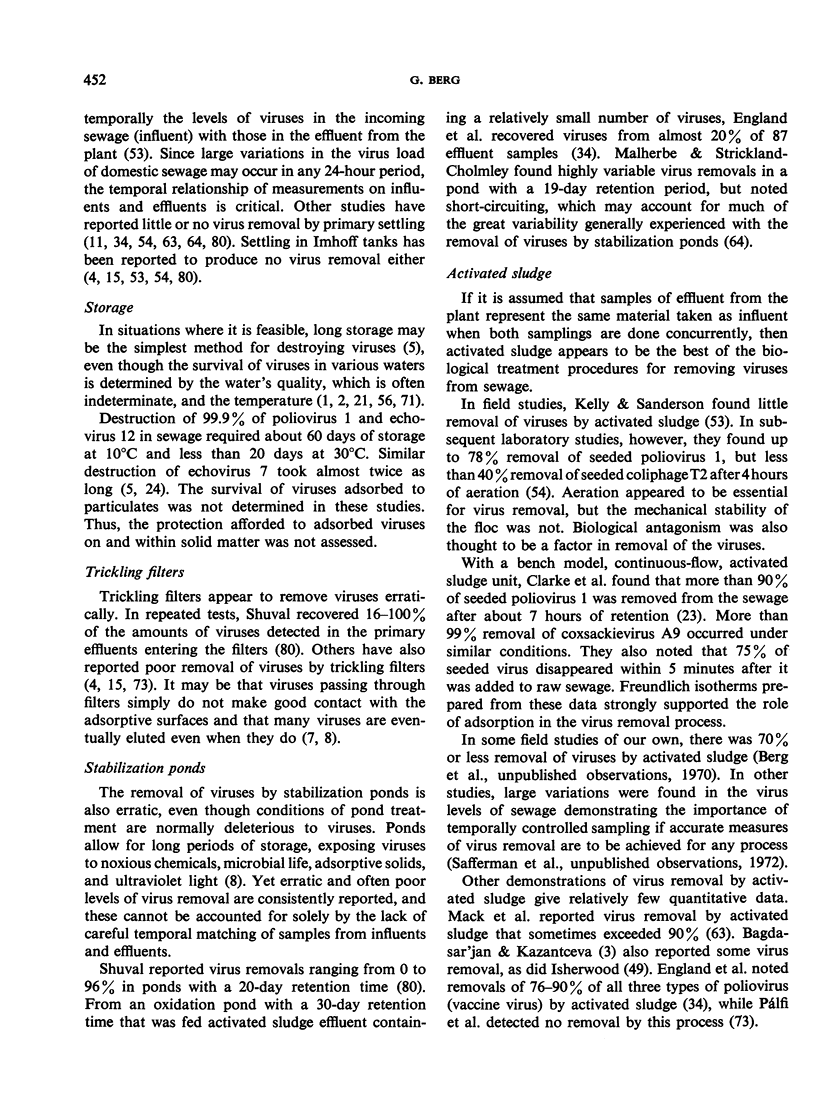
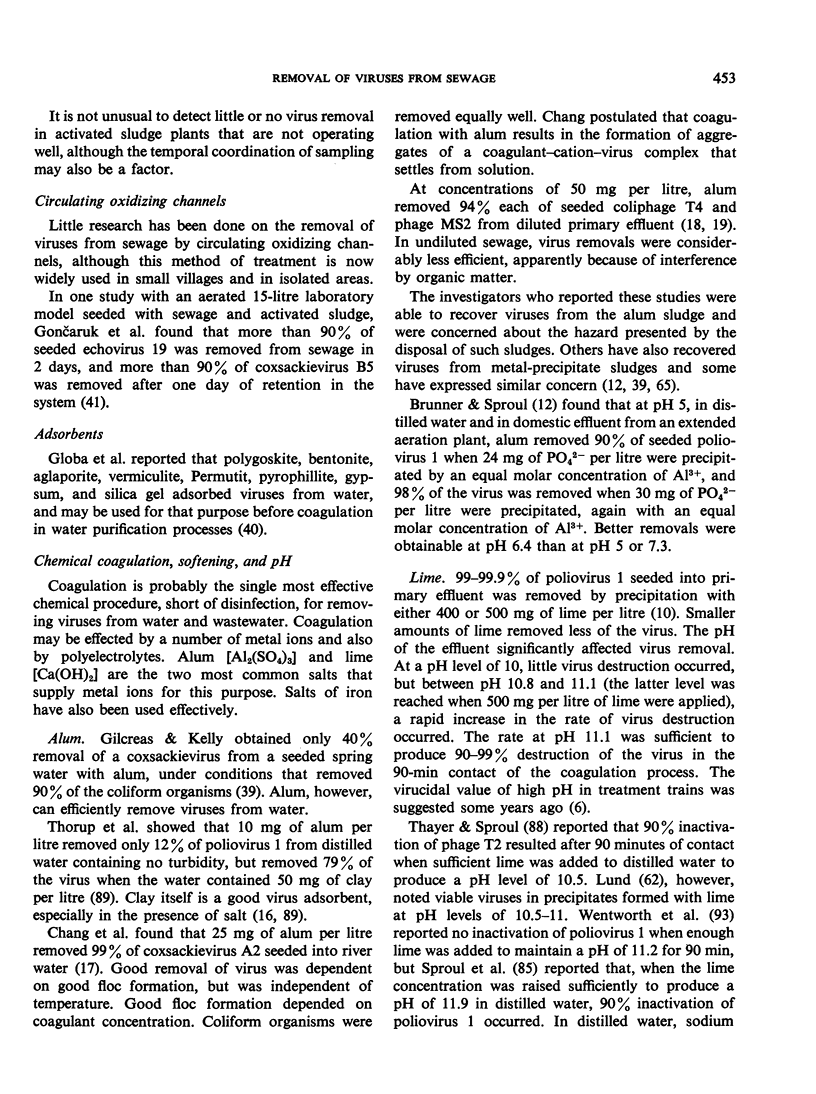
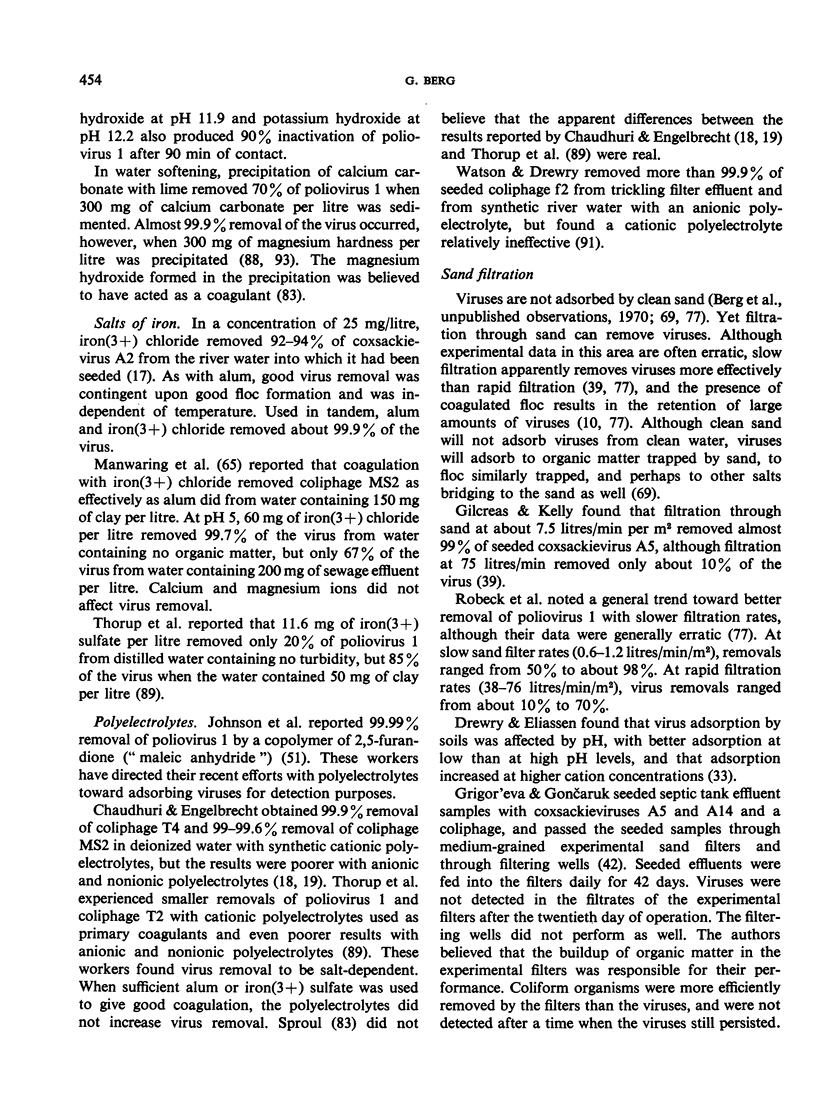
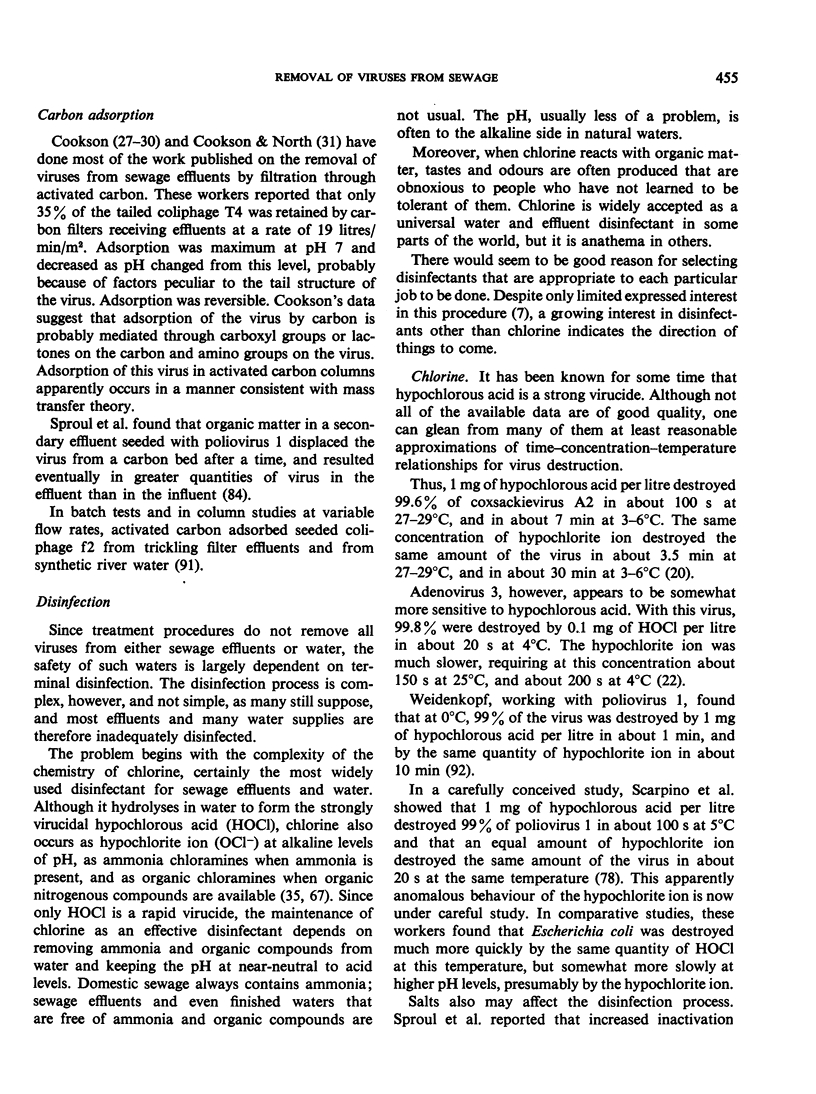
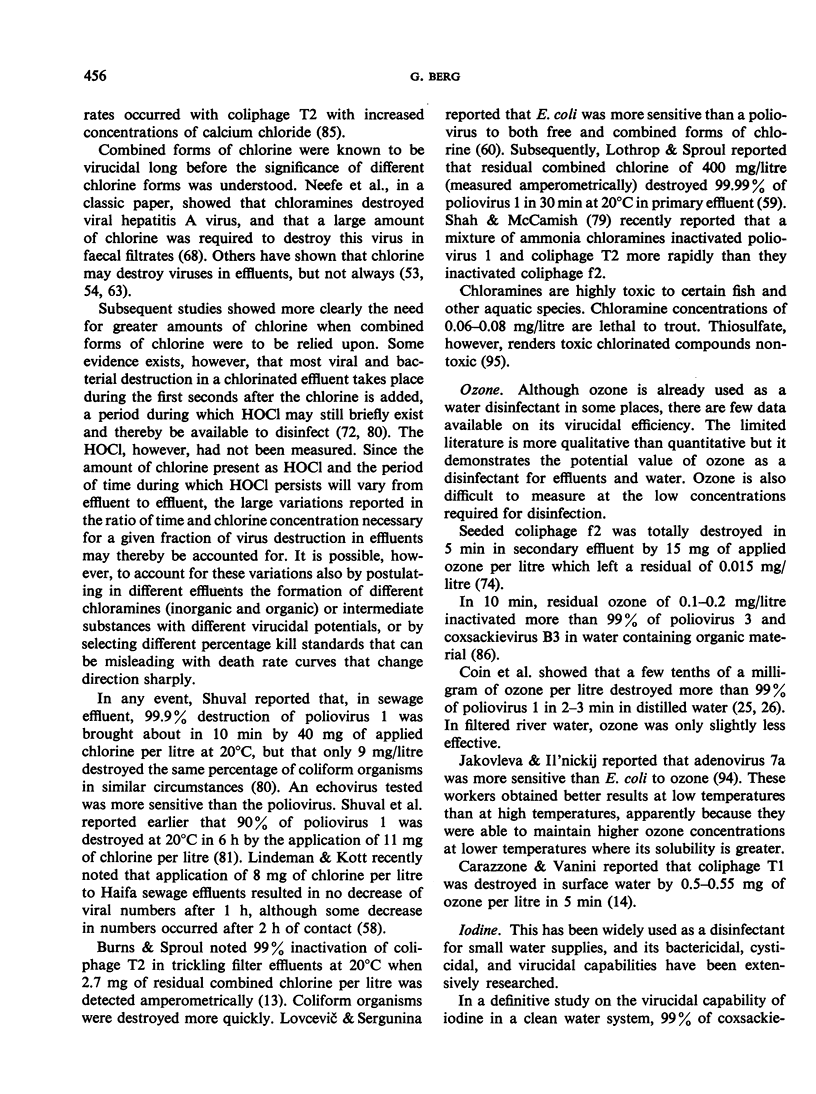
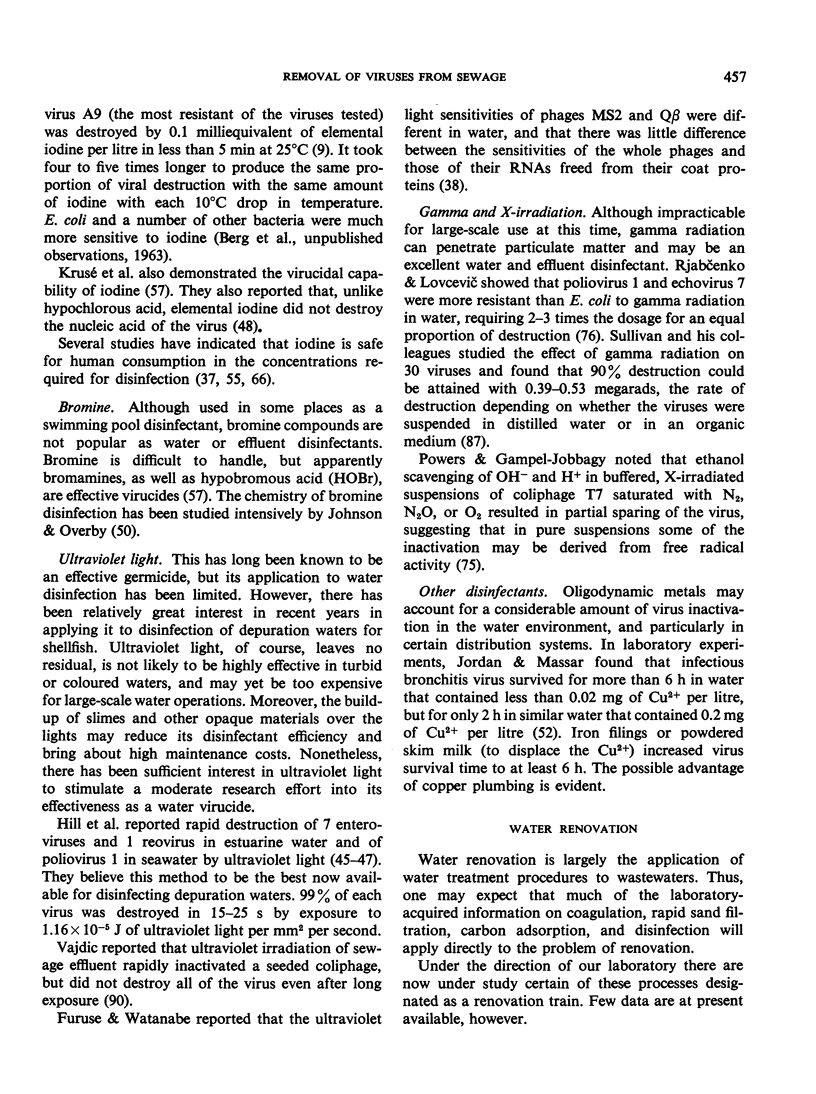
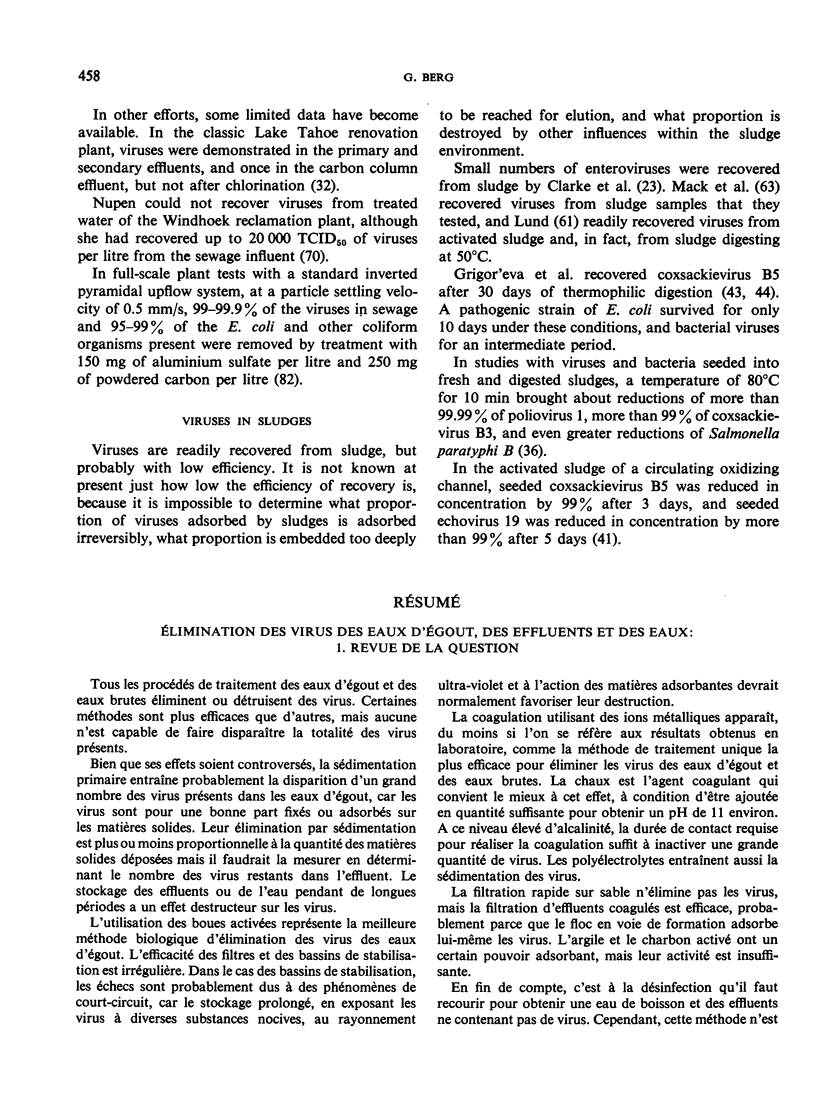
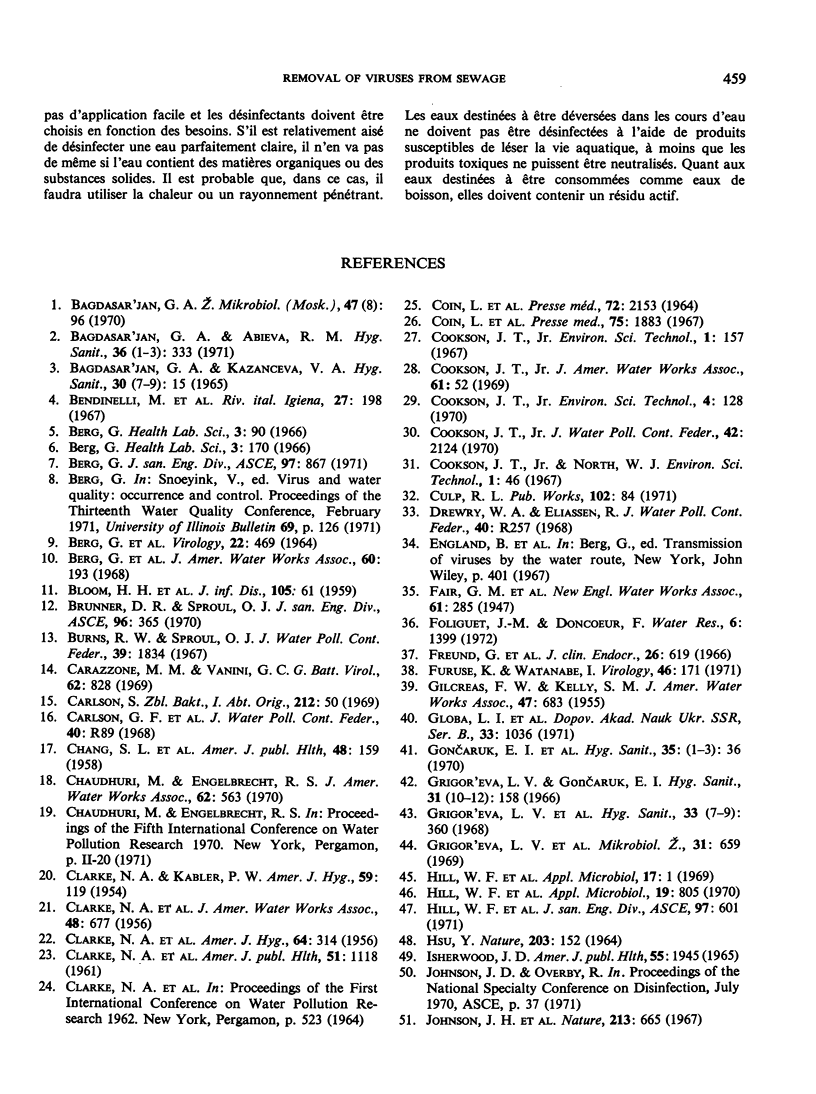
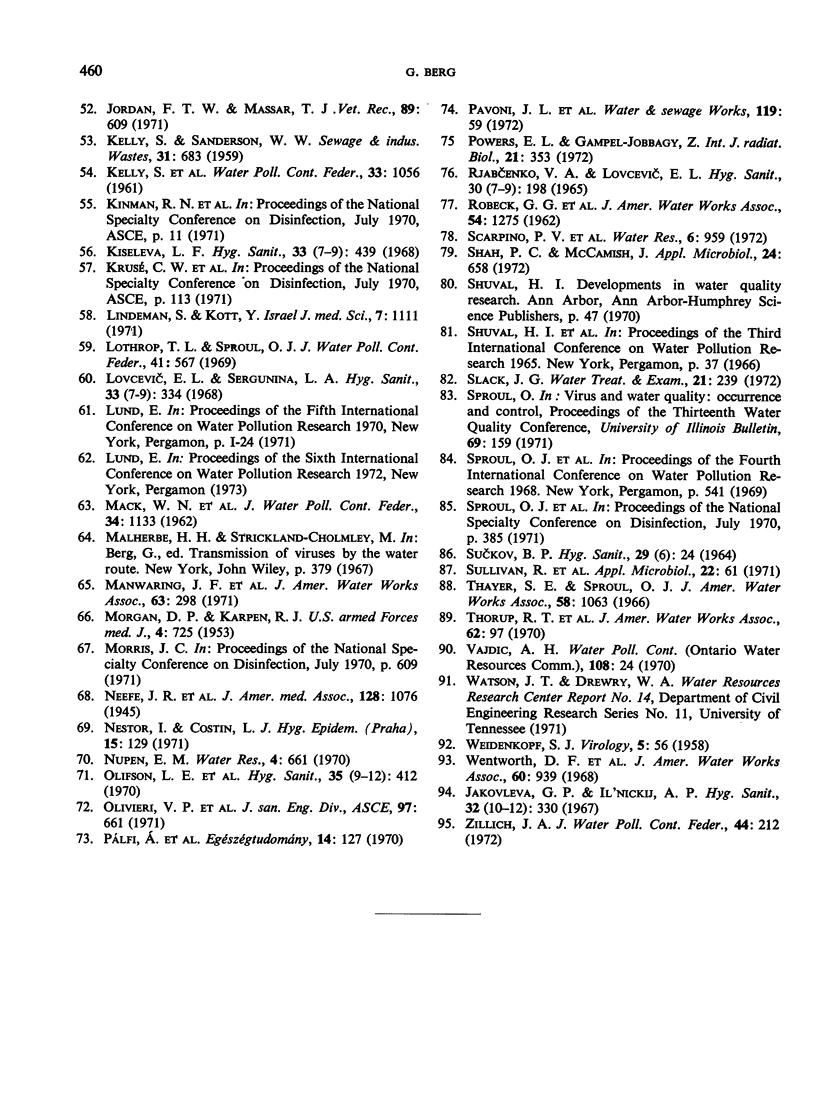
Selected References
These references are in PubMed. This may not be the complete list of references from this article.
- Bendinelli M., Ruschi A., Lapucci P. L. Sul reperto di enterovirus nei liquami a vari livelli di un impianto di smaltimento a letti percolatori. Riv Ital Ig. 1967 May-Aug;27(3):198–211. [PubMed] [Google Scholar]
- Berg G. Virus transmission by the water vehicle. 3. Removal of viruses by water treatment procedures. Health Lab Sci. 1966 Jul;3(3):170–181. [PubMed] [Google Scholar]
- Burns R. W., Sproul O. J. Virucidal effects of chlorine in wastewater. J Water Pollut Control Fed. 1967 Nov;39(11):1834–1849. [PubMed] [Google Scholar]
- CLARKE N. A., KABLER P. W., STEVENSON R. E. The inactivation of purified type 3 adenovirus in water by chlorine. Am J Hyg. 1956 Nov;64(3):314–319. doi: 10.1093/oxfordjournals.aje.a119844. [DOI] [PubMed] [Google Scholar]
- CLARKE N. A., KABLER P. W. The inactivation of purified Coxsackie virus in water by chlorine. Am J Hyg. 1954 Jan;59(1):119–127. doi: 10.1093/oxfordjournals.aje.a119617. [DOI] [PubMed] [Google Scholar]
- COIN L., HANNOUN C., GOMELLA C. INACTIVATION PAR L'OZONE DU VIRUS DE LA POLIOMY'ELITE PR'ESENT DANS LES EAUX. Presse Med. 1964 Sep 12;72:2153–2156. [PubMed] [Google Scholar]
- Coin L., Gomella C., Hannoun C., Trimoreau J. C. Inactivation par l'ozone du virus de la poliomyélite présent dans les eaux. (Nouvelle contribution) Presse Med. 1967 Sep 23;75(38):1883–1884. [PubMed] [Google Scholar]
- Cookson J. T., Jr Design of activated carbon adsorption beds. J Water Pollut Control Fed. 1970 Dec;42(12):2124–2134. [PubMed] [Google Scholar]
- Furuse K., Watanabe I. Effects of ultraviolet light (UV) irradiation on RNA phage in H 2 O and in D 2 O. Virology. 1971 Oct;46(1):171–172. doi: 10.1016/0042-6822(71)90018-3. [DOI] [PubMed] [Google Scholar]
- Grigor'eva L. V., Korchak G. I., Bei T. V. Vyzhyvannia deiakykh bakterii i virusiv v osadakh stichnykh vod. Mikrobiol Zh. 1969 Nov-Dec;31(6):659–664. [PubMed] [Google Scholar]
- Isherwood J. D. The fate of Coxsackie virus A-13 in water reclamation. Am J Public Health Nations Health. 1965 Dec;55(12):1945–1952. doi: 10.2105/ajph.55.12.1945. [DOI] [PMC free article] [PubMed] [Google Scholar]
- Johnson J. H., Fields J. E., Darlington W. A. Removing viruses from water by polyelectrolytes. Nature. 1967 Feb 18;213(5077):665–667. doi: 10.1038/213665a0. [DOI] [PubMed] [Google Scholar]
- Jordan F. T., Nassar T. J. The influence of copper on the survival of infectious bronchitis vaccine virus in water. Vet Rec. 1971 Dec 4;89(23):609–610. doi: 10.1136/vr.89.23.609. [DOI] [PubMed] [Google Scholar]
- Lothrop T. L., Sproul O. J. High-level inactivation of viruses in wastewater by chlorination. J Water Pollut Control Fed. 1969 Apr;41(4):567–575. [PubMed] [Google Scholar]
- MORGAN D. P., KARPEN R. J. Test of chronic toxicity of iodine as related to the purification of water. U S Armed Forces Med J. 1953 May;4(5):725–728. [PubMed] [Google Scholar]
- Manacorda Carazzone M., Vanini G. C. Ricerche sperimentali circa l'azione dell'ozono sui virus. I. Azione sul batteriofago T. G Batteriol Virol Immunol. 1969 Nov-Dec;62(11):828–839. [PubMed] [Google Scholar]
- Nestor I., Costin L. The removal of Coxsackie virus from water by sand obtained from the rapid sand filters of water-plants. J Hyg Epidemiol Microbiol Immunol. 1971;15(2):129–136. [PubMed] [Google Scholar]
- Powers E. L., Gampel-Jobbagy Z. Water-deprived radicals and radiation sensitivity of bacteriophage T 7 . Int J Radiat Biol Relat Stud Phys Chem Med. 1972 Apr;21(4):353–359. doi: 10.1080/09553007214550421. [DOI] [PubMed] [Google Scholar]
- Shah P. C., McCamish J. Relative chlorine resistance of poliovirus I and coliphages f2 and T 2 in water. Appl Microbiol. 1972 Oct;24(4):658–659. doi: 10.1128/am.24.4.658-659.1972. [DOI] [PMC free article] [PubMed] [Google Scholar]


